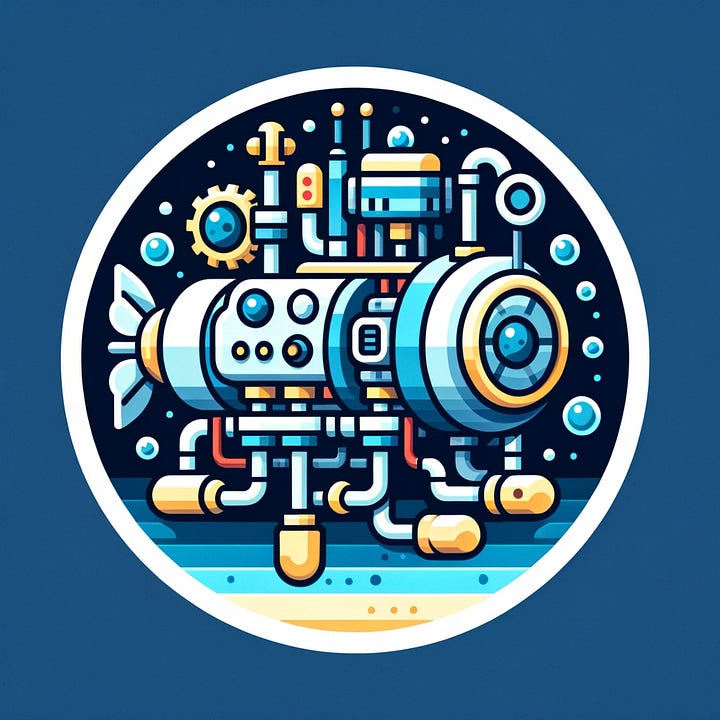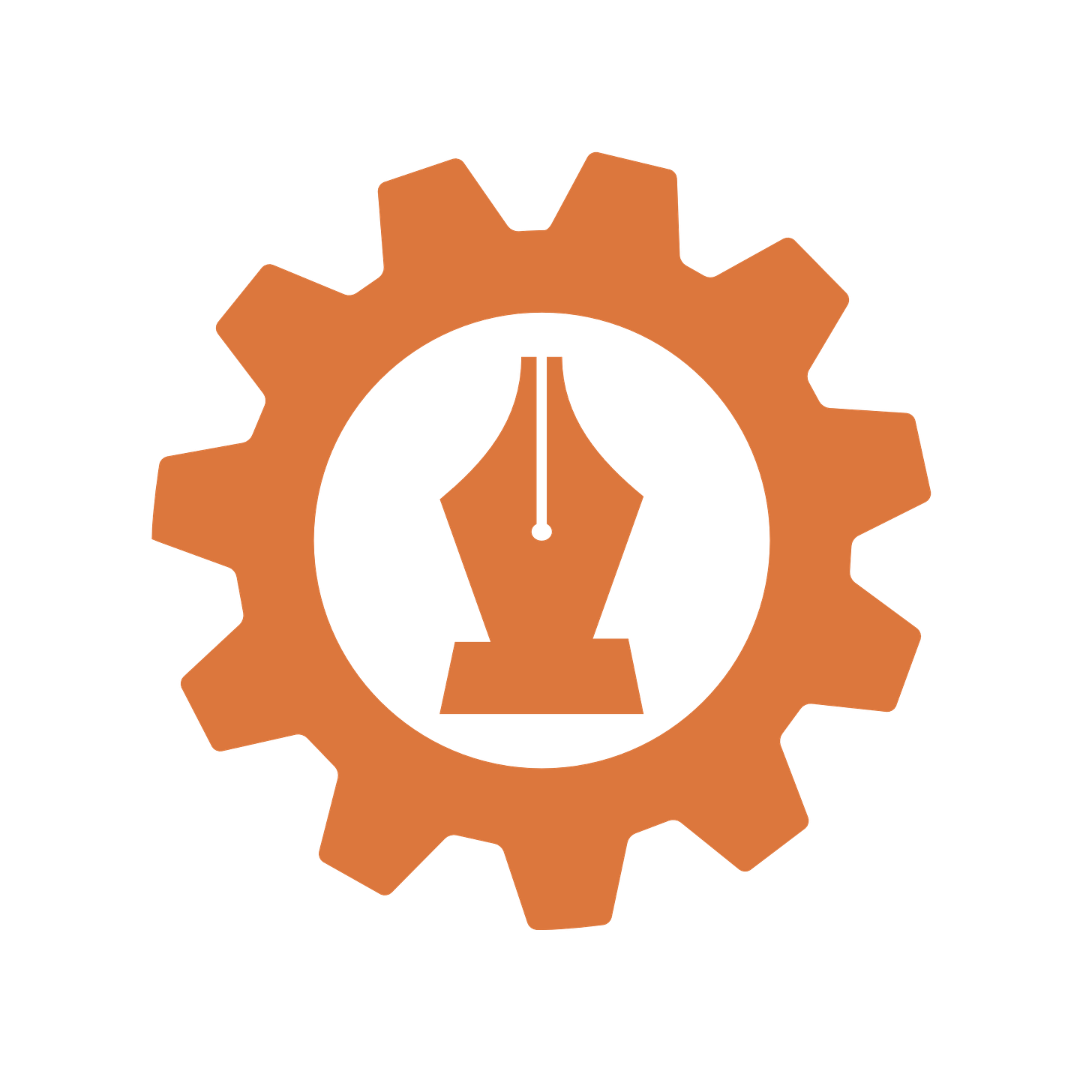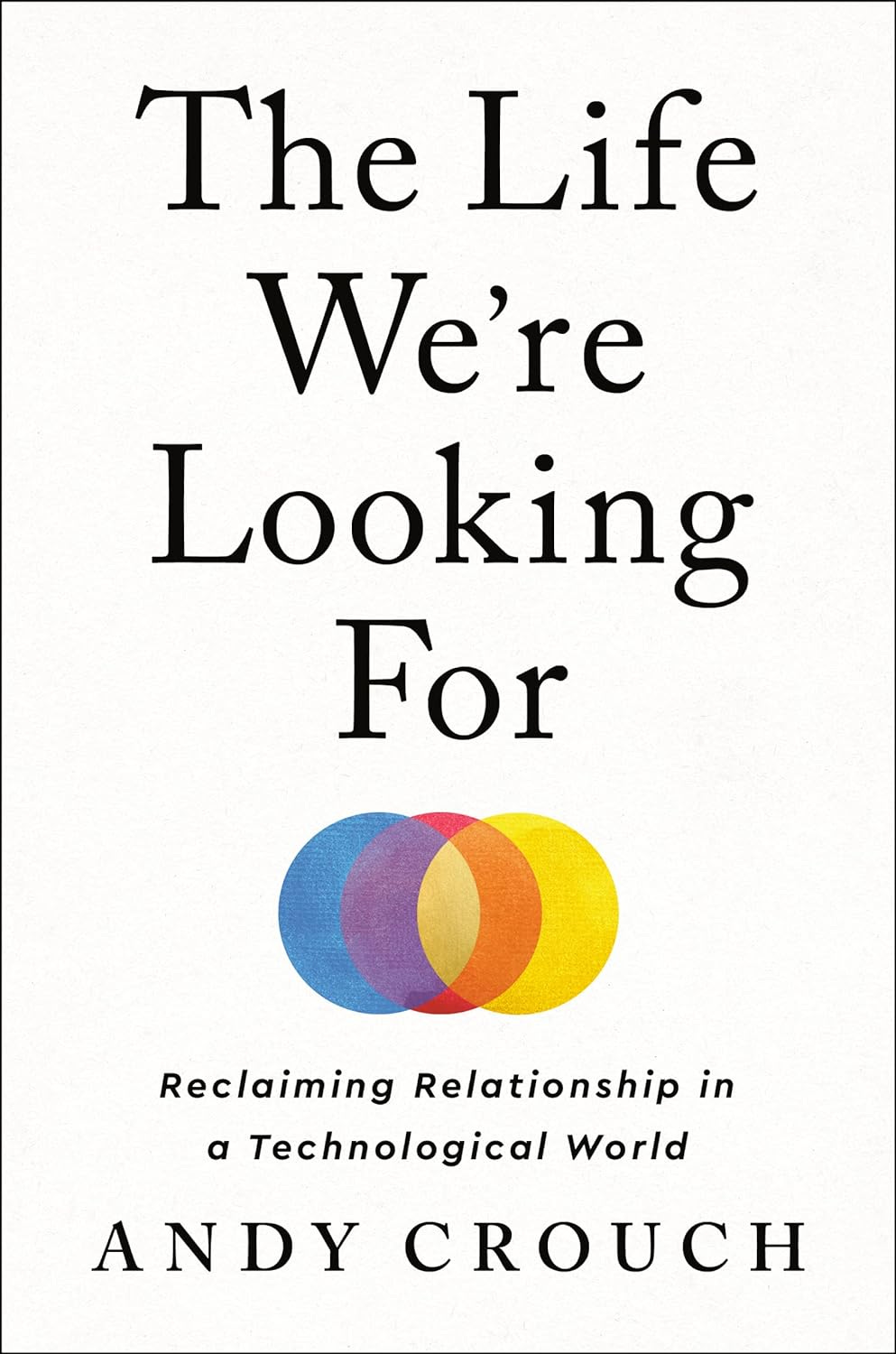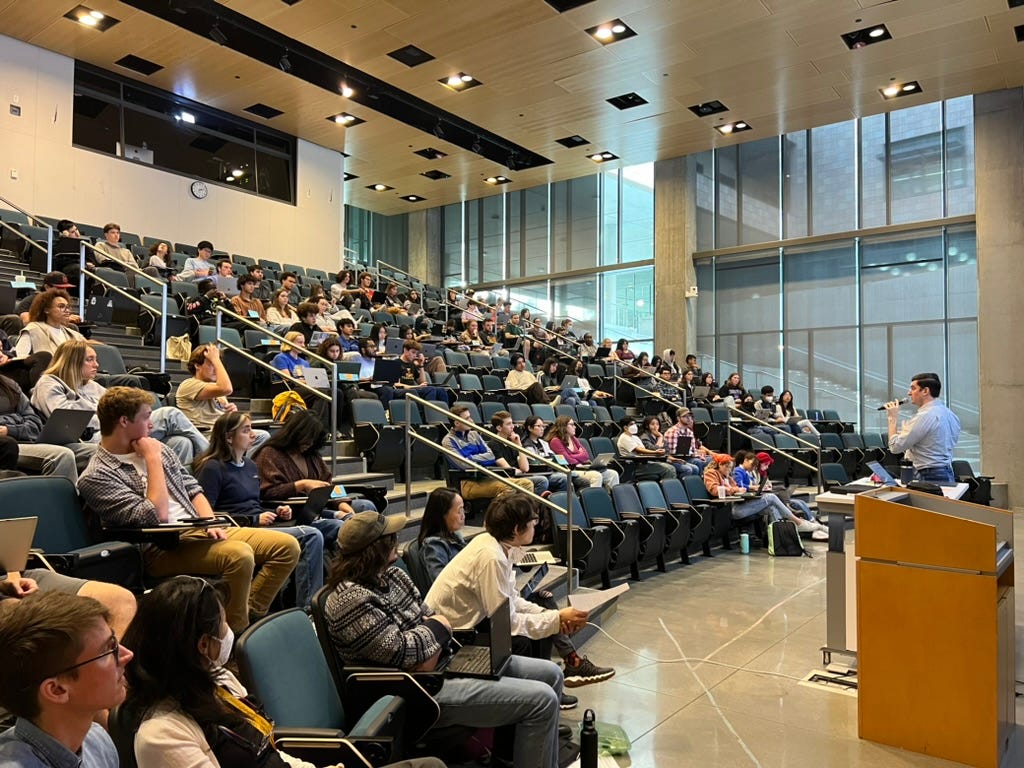If there is anything that the last year of innovation in generative AI has taught us, it is that we are up to our eyeballs in new technology. Technology is empowering, but innovation always comes at a price.
Digital or otherwise, technology can help us be more productive and enable us to do new things or streamline our existing tasks. But all too often, our interactions with modern technology quickly turn from enabling to enslaving. We start off feeling a thrill only to end up feeling exhausted, weary, or even worse, exploited. Technology enables us to work whenever and wherever we want, but it’s only a matter of time before we find our eyes strained from staring at backlit screens for far too many hours each day, our bodies broken from poor typing ergonomics and necks craned toward screens, and our minds muddled from too many consecutive video calls.
Digital technology makes these tradeoffs especially obvious, but the potential for technology to extract our humanity rather than enlarge it is inherent in all technologies. Innovation is a bargain. Understanding that bargain is key to designing and using technology in a way that cultivates human flourishing.
The Innovation Bargain is about freedom and limitation
I first heard the term Innovation Bargain from one of my favorite writers on technology and human flourishing, Andy Crouch. In a blog post from 2022, Andy reveals how to understand the tradeoffs that we so often implicitly make when deciding to use a particular technology.
The Innovation Bargain highlights the insight that technology always comes at a cost. Technology frees us in some aspects, but it also adds new constraints and eliminates existing choices. As we think about technology and how we must contain it, the innovation bargain provides a clear rationale for why we should contain it and how we can go about doing so.
To explain this tradeoff, Andy lists four statements that any innovation implicitly finishes:
Now you can…
You’ll no longer have to…
You’ll no longer be able to…
Now you’ll have to…
Complete these sentences and you’ll get a sense of how you interact with a particular innovation. On the one hand, a new technology can give you more autonomy by enabling you to do something new (“now you can…”) and freeing you from obligation (“you’ll no longer have to…”). But, as much as innovation enables new activities and frees you from obligations, it also removes abilities (“you’ll no longer be able to…”) and adds new obligations (“now you’ll have to”).
As I sat and contemplated this idea, I couldn’t shake the sense that there was a nice 2x2 grid buried somewhere here to help visualize this concept. Somehow, the kids slept in on Saturday morning so I had some time to sit with my trusty PaperMate Flair felt pen and notebook to workshop a few ideas. After a few iterations, here’s one way I’ve been thinking about the Innovation Bargain.

The two axes of this figure demonstrate how these four statements support or oppose each other. The vertical axis demonstrates how technologies can shape us either by freeing us or limiting us. The horizontal axis describes how this freedom or limitation can happen in either a passive or active manner. Innovation can either enable or force us to do something new (active) or eliminate our ability to do something we already do (passive).
Every technology will contribute something to each of the four quadrants. The relative importance or weight of each statement helps us to understand whether the tradeoff is worth it. We can imagine trying to put quantitative weight on the new abilities a technology enables or the existing choices it eliminates. Then, by understanding the net effect of these various contributions, we can get a sense of whether the bargain is one we wish to make.
The Innovation Bargain in Practice: Kindle and Instagram
The best way to get a feel for how the Innovation Bargain works is to try out an example. I encourage you to look around and try it out on something you see, but first, I’ll give you a few examples.
My Kindle is one of my favorite devices. I find that, unlike my computer or smartphone, I seldom feel exploited or manipulated by my Kindle. The framework of the Innovation Bargain helps to explain why.
In the framing of the Innovation Bargain, the Kindle enables me to read almost anything anywhere. Gone are the days of lugging stacks of books around or making those agonizing decisions about what books to bring along with you on a trip with limited suitcase real estate. And with the backlit screen, I can easily read in bed without needing to fumble with a book light.
However, as with any innovation, there is a price. In the case of the Kindle or any e-reader, you can’t enjoy the feel and smell of a physical book. It also means that your book now has a battery and you need to remember to periodically charge it. Perhaps less obvious, another constraint is that you are now forced to read within Amazon’s ecosystem and can only buy digital versions of books directly from them instead of, for example, supporting your local bookstore.
The Innovation Bargain also elucidates why some technologies leave us feeling exploited and used. To take a more negative example, consider Instagram. Instagram enables us to see the world and people anywhere in it. It curates content into an algorithmically-sorted feed so we don’t need to reach out to our friends individually to get updates on what they’re up to and what we might like to see. But there is a price to be paid.
Instagram shapes the way we see the world, through biased and filtered glimpses of carefully curated selfies and stylistically composed images. And once a platform like Instagram reaches a certain scale, it fosters a feeling of obligation and a fear of missing out. Whether it’s legitimate or not, we feel the need to be present and active—to participate in the exercise of competitively framing our own lives, bodies, or experiences in a certain light. The same argument can be made of almost any other social media platform. They all, intentionally or not, create and feed patterns of dopamine addiction.
The Innovation Bargain makes the implicit explicit. So often, the purpose of the marketing spin is to highlight the freedom that technology brings while burying the limitations that it necessarily also imposes. There are lots of reasons that companies do this, not least of all that it is in the best interest of their sales and shareholders. But this marketing spin is rarely in the best interest of our humanity.
Our job as thoughtful and wise designers and users of technology is to think critically about our technology through frameworks like the Innovation Bargain to clearly understand its impact on our humanity and our flourishing.
The coming wave makes the Innovation Bargain more important than ever
Understanding and applying the Innovation Bargain is critical if we are to flourish in our technology-infused society. The framework of Innovation Bargain helps us to understand the price we pay for incorporating technology into our lives. As we face the next wave of technological revolution powered by artificial intelligence and synthetic biology, we’ll need it more than ever.
Thinking about technology as we enter into 2024 I’m pretty confident in making one prediction: generative AI is going to continue to diffuse throughout the digital technologies in our lives. Right now, you’ve got to open up ChatGPT or a similar tool to interact with an LLM, but by the end of the year, you’re going to find it at your elbow almost everywhere.
I’m not going out on a limb here. This is hardly a bold prediction because in many ways, it has already come true. Even now, Microsoft is rolling out Copilot Pro, putting Clippy 2.0 at your elbow across the MS Office suite. As folks like
and among others have been predicting for a long time now, you’ll need to make a decision every single time you open an application whether you’re going to face the blank page yourself or use generative AI to give you a running start.I’m not going to argue for the sacredness of the blank page here. I’ll save that for another day. I’m not opposed to finding ways to help us work through the challenges that we face more effectively, but those strategies and tools are only truly valuable to the degree that they extend our humanity instead of replacing it.
When faced with new technological innovation, our natural response is to maximize our freedom by creating new abilities and removing existing constraints. To borrow again from Andy Crouch and his writing, we want power without effort—superpowers. What the Innovation Bargain makes clear is that even the most positive and liberating innovation comes with a tradeoff. There is always a bargain to be made.
And we must return to ask ourselves, what is the life we’re looking for?
It’s the answer to this question that will help us to adjudicate with wisdom whether the benefits offered by a particular Innovation Bargain are worth the cost.
Where does the Innovation Bargain apply in your life?
How does the Innovation Bargain apply to your interactions with technology? What other examples come to mind? If you’ve got a thought, please leave a comment or hop over to the Chat to share it on the weekly thread.
The Book Nook
I’ve written about Andy’s book The Life We’re Looking For before, but it’s worth mentioning again this week. If you’ve been hanging around here for any amount of time and are familiar with Andy and his writing, it won’t surprise you to know that he has significantly influenced my thinking about technology and its role in human flourishing.
If you find yourself looking for more thought-provoking writing about technology and how it shapes us, I highly recommend that you dig further into Andy’s writing and speaking. If you’re thinking about the future of technology, there’s no better place to start than The Life We’re Looking For.
I’ll close here by sharing one of the many quotes that resonated with me, where Andy casts a vision for a future where we revitalize our communities in the face of our technologically-fueled isolation.
This movement [in which every single member of our community matters as much as each part of our own bodies matters to us] will start by acknowledging all the ways of being human we have lost as we have become embedded in a world of money, machines, and devices. It will require reconsidering the roots of the modern technological mindset, which turns out to be something built on harmful delusions, quite different from science itself. It will require giving a far more serious reckoning than we have generally allowed to the ancient, primal, and spiritual forces that still animate our technological dreams.
The Professor Is In
And we’re off! Last week was the start of the spring semester and for me, that meant the launch of E80. We’re excited to have a big class of engineering majors this semester (only a few short of 100!).
I’m very excited to be teaching E80 again this semester. The teaching team has been working hard to revamp multiple areas of the course and one of the things I’m most looking forward to is the new alternative grading scheme that we’re introducing this year to enable students to more fully own their learning and to provide them opportunities and incentives to revise and resubmit work if it doesn’t completely meet the standards the first time around.
If you’re interested in learning more about the course, you can check out our new shiny website (hooray for Quarto!) here.
P.S., here’s the cool course logo that DALLE-3 generated for me. There’s a screenshot of the prompt I gave it on the left and the image it generated for me on the right.


Leisure Line


Made a new chocolate chip cookie recipe this week using a recipe from NY Times Cooking. They are delicious.
Here’s a link to a gift article in case you don’t have a subscription and want to try it out!
Still Life
I had long heard about Julia Cameron’s book The Artist’s Way. I picked up the Kindle edition earlier this month when I saw it had dropped below my impulse-buy threshold of $2.99 (see essay above for Kindle love story). Then, on Wednesday of last week, as I was out for a run in the neighborhood for the first time in far too long, I stumbled on paper copies of the book and an accompanying workbook that someone had put out at their curb. I couldn’t believe it and grabbed them both (the journal is empty of course—turns out the artist’s way is tough). Looking forward to digging into them soon!











The quasi-religious divide in my boarding school hinges on differing answers to these tradeoffs. It might be useful to catalog the things faculty hold sacred...as a prelude to answering the tradeoffs. In the Christian Bible, Jesus throws the moneylenders out of the temple. In aiming to add AI to my classwork, I'm starting to feel like one of those moneylenders. What foundations can we agree on *before* we talk about the bargain?
Josh, this is a very useful framework. I'm glad you're doing the heavy lifting on this sort of thinking today!